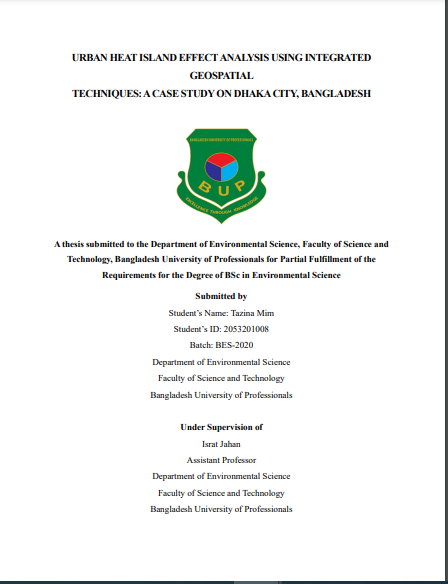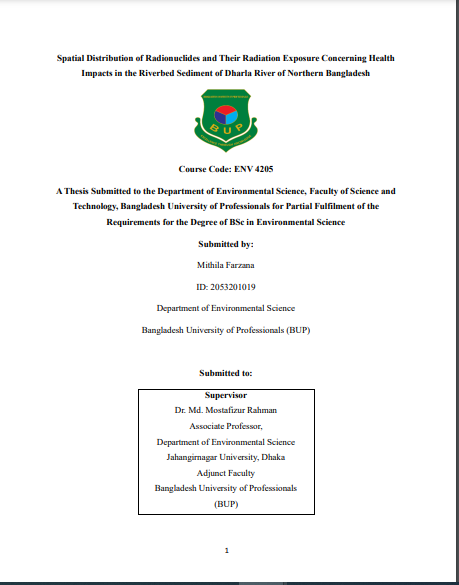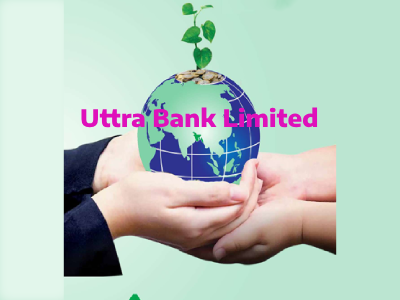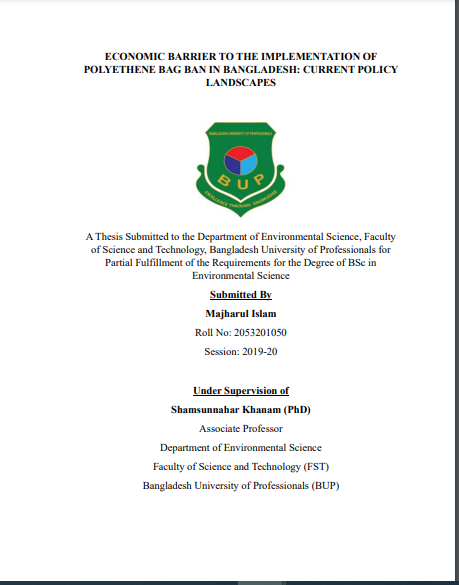
Economic Barriers to Polyethene Bag Ban in Bangladesh. In 2002, Bangladesh became the first country to implement a ban on the use of polyethylene bags. However, after 20 years, it appears that the ban has not been implemented. Taking this consideration, this study investigates the Economic barriers to the implementations of polyethene bag ban in Bangladesh.
After conducting key Informant Interview, the study found that Low Pricing of polythene bag, no available alternatives of polythene bag, high price of alternatives, lack of financial and infrastructural support for the eco-friendly alternatives are the main economic barrier to the polyethene bag bans.
Background of the Study
Plastics are extensively used globally because of their light weight, high durability, adaptability, ease of manufacturing, and reduced production costs compared with other comparable materials. The history of plastic spans more than a century. Plastic items, including polythene shopping bags, were extensively introduced in Bangladesh in the early 1980s.
Approximately 8 million metric tons of plastic are discharged into the Earth’s seas annually. If this trend continues, projections indicate that by 2050, the quantity of plastic in the oceans will surpass that of fish. The overutilization of polythene bags exacerbates a multitude of problems, particularly in metropolitan environments.
The no biodegradable nature of polyethylene shopping bags has detrimental impacts on soil and water. The majority of packaging and Single-use plastic bags are manufactured from polyethylene or polythene, which gained widespread popularity during the 1960s. These bags constitute a significant contributor to the global accumulation of plastic waste.
| Report Title : | Economic Barriers to Polyethene Bag Ban in Bangladesh. |
| University Name : | Bangladesh University of Professionals |
| Submitted To : | Shamsunnahar Khanam (PhD) |
| Submitted By : | Majharul Islam |
| Total Page : | 84 |
In 2020, the Dhaka metropolitan region generated a daily waste of 6,646 tons, with plastic accounting for 10 percent of the total (Burke, 2019). Less than 50% of plastic waste is recycled, with 48% being sent to landfills, and the remaining portion being either thrown in rivers or abandoned in drains and other locations inside the city.
The collaboration of several parties, including governments, non-government organizations, manufacturers, and consumers, is important in order to effectively address this issue. Global governments have implemented several regulation measures aimed at eliminating single-use plastics. The primary objective of the EU regulation 2015/720 is to decrease the quantity of disposable Polyethene bags.
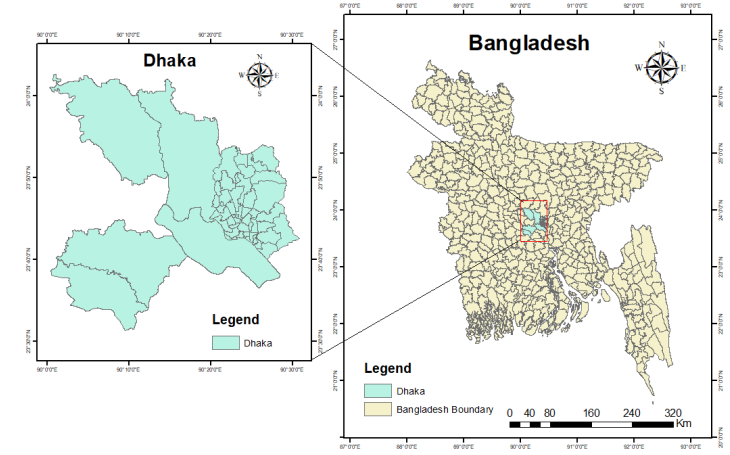
Outline of the Thesis
One: Introduction, Background of the Study, Problem Statement, Research Gap, Rational of the Study, Research Question, Research Objectives, Broad Objective , Specific Objective , Limitation of The Study , Definitions of Terms Used in Thesis, Outline of the Thesis,
Two: Literature Review, Classification of Plastic Materials, Single Use Plastics, Micro plastic and Macro-plastic, Effect of Plastic Pollution on Environment, Air Pollution, Water Pollution, Soil Pollution, Organizational and Governmental Policies against Plastic Pollution in Bangladesh.
Three: Methodology, Study Area, Research Design, Data Collection, Key Informants Interview, Survey, Paper Review, Data Analysis, Survey, Key Informant Interview.
Four: Result and Discussion, Survey, Key Informant Interview, Comparative analysis of policies and initiative taken against polyethene bag ban among eleven countries in the world.
Five 5: Conclusion and Recommendation Reference,
Research Questions
Polyethene bag bans have mostly been studied with a focus on environmental consequences, consumer behavior, and policy design aspects.
1. What are the Economic barriers to the implementation of the polyethene bag ban in Bangladesh?
2. What are the people’s perceptions of the polyethene bag ban in Bangladesh?
3. What are the people’s perceptions about the economic barrier to the implementation of the plastic bag ban?
4. What are the gaps in the policies of Bangladesh to implement the polyethene bag ban compared to the other polyethene bag-banned countries?
Research Objectives
Broad Objective
➢ To identify the major Economic Impediments to polyethene bag bans.
Specific Objective
➢ To identify consumer behavior to polyethene bag usage and ban.
➢ To assess and compare the policies of polyethene bag-banned countries in the world with Bangladesh
Conclusion
The study presents an analysis of the prevailing use of polythene bags, the implementation of polythene bag bans, and the resulting environmental impacts. It offers a comprehensive examination of opinions, perspectives, and actual facts pertaining to these subjects.
The use of polythene bags may be attributed to the limited availability of alternative materials and their widespread accessibility. The elevated cost associated with plastic items may deter the general population from using them.
